How was Carlo Ratti’s ‘Intelligens’? Wallpaper* editors discuss the 19th Venice Biennale
Having visited ‘Intelligens’, the 19th Venice Biennale's main show by curator Carlo Ratti, the Wallpaper* editors discuss what they saw at the world's biggest global architecture festival
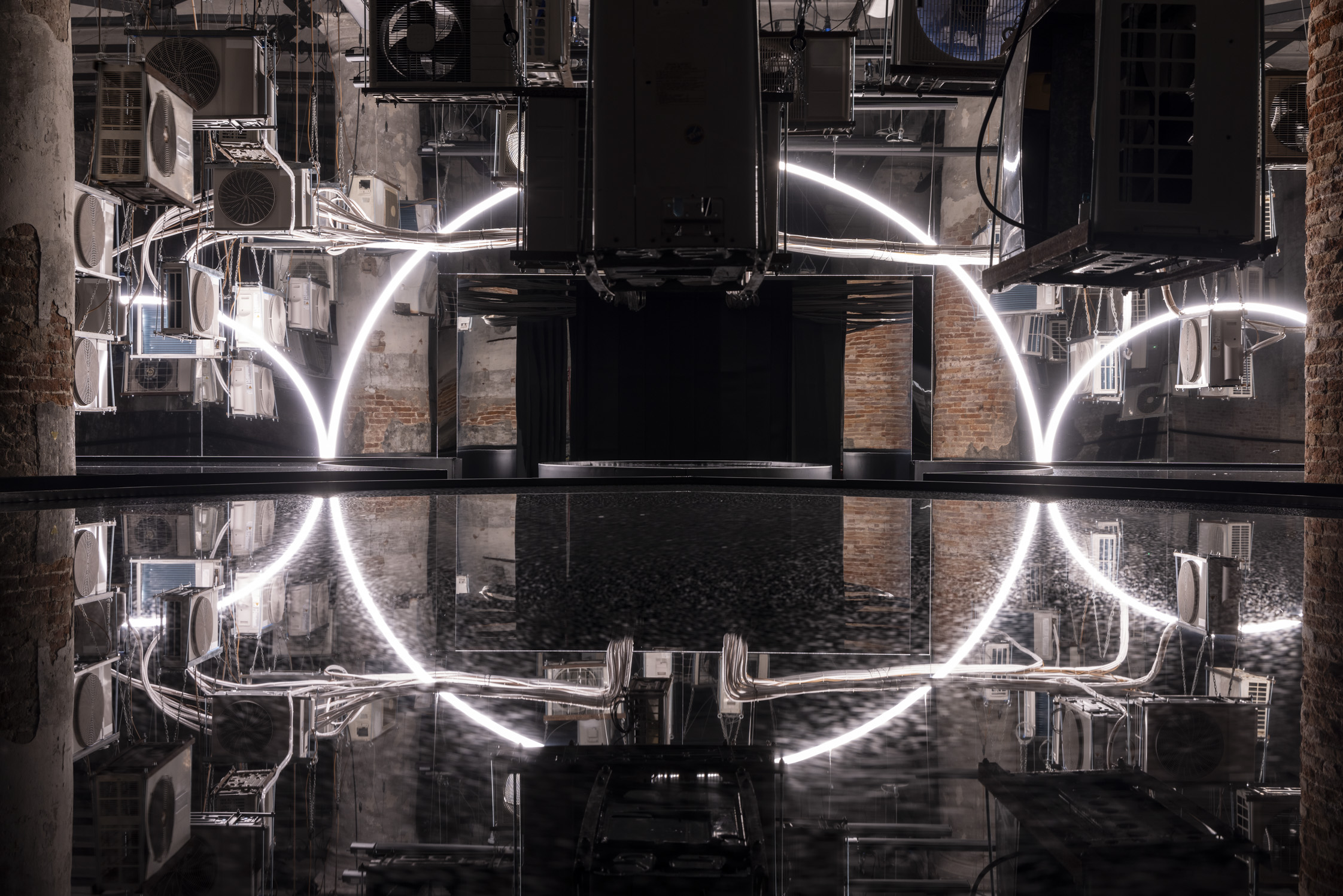
Featuring a whopping 750 participants, ‘Intelligens. Natural. Artificial. Collective.’, the main show at the Venice Architecture Biennale 2025, opened this weekend in the historic city of Venice. The world’s biggest global festival of design for the built environment was curated this year by Italian architect Carlo Ratti, who opened his statement for the official launch, highlighting how ‘architecture has always been a response to a hostile climate.’ He continues: ‘Adaptation demands a fundamental shift in architectural practice.’
In response to this, Ratti set out to find common ground, adjustments, and planned or impromptu collaborations between us and our surroundings, the natural and the artificial. The goal? To find inspiration in order to carve a way forward and out of the climate crisis, yes, but beyond that, to also envision ways of coexisting with our context in a more harmonious, meaningful way for all.
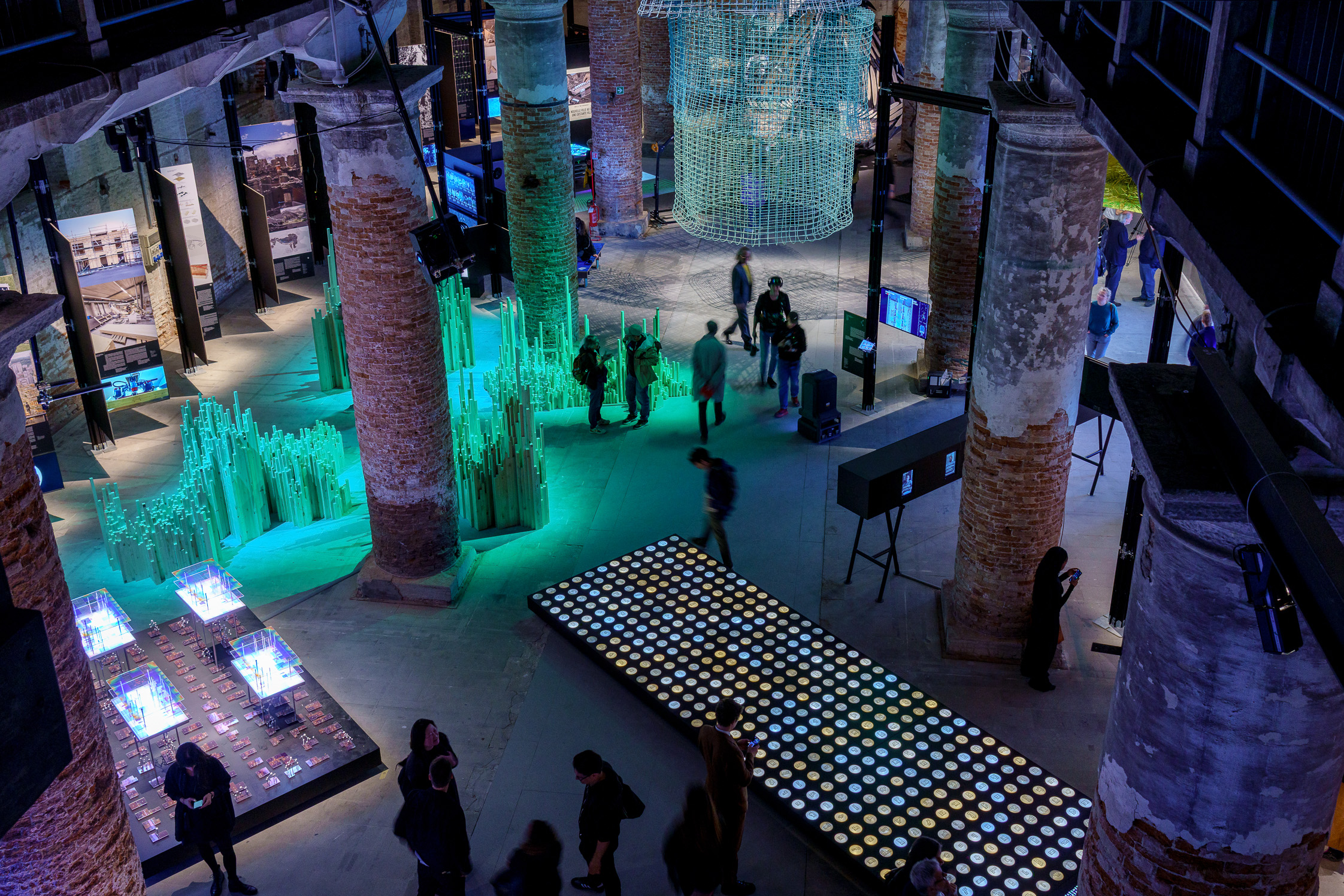
Stepping inside ‘Intelligens. Natural. Artificial. Collective.’
The result – over 300 projects – takes up, as always, the biggest part of the Arsenale’s vast halls, spilling out to its surrounding grounds and gardens. It would also have been in the Giardini’s Central Pavilion, which, until now, also played host to a good part of the main show, however, this is now closed for restoration, which left the existing Arsenale spaces (an old rope factory) to pick up the largest part of the contributions.
Invited contributions included architects from across the globe, lots of academics and researchers, as well as those selected from an open call for the first time in the show's history. Ratti described his approach as seeing the biennale as a platform to converse with the entire world of architecture. ‘The central curatorial exercise for Biennale Architettura 2025 was the Space for Ideas,' he said.
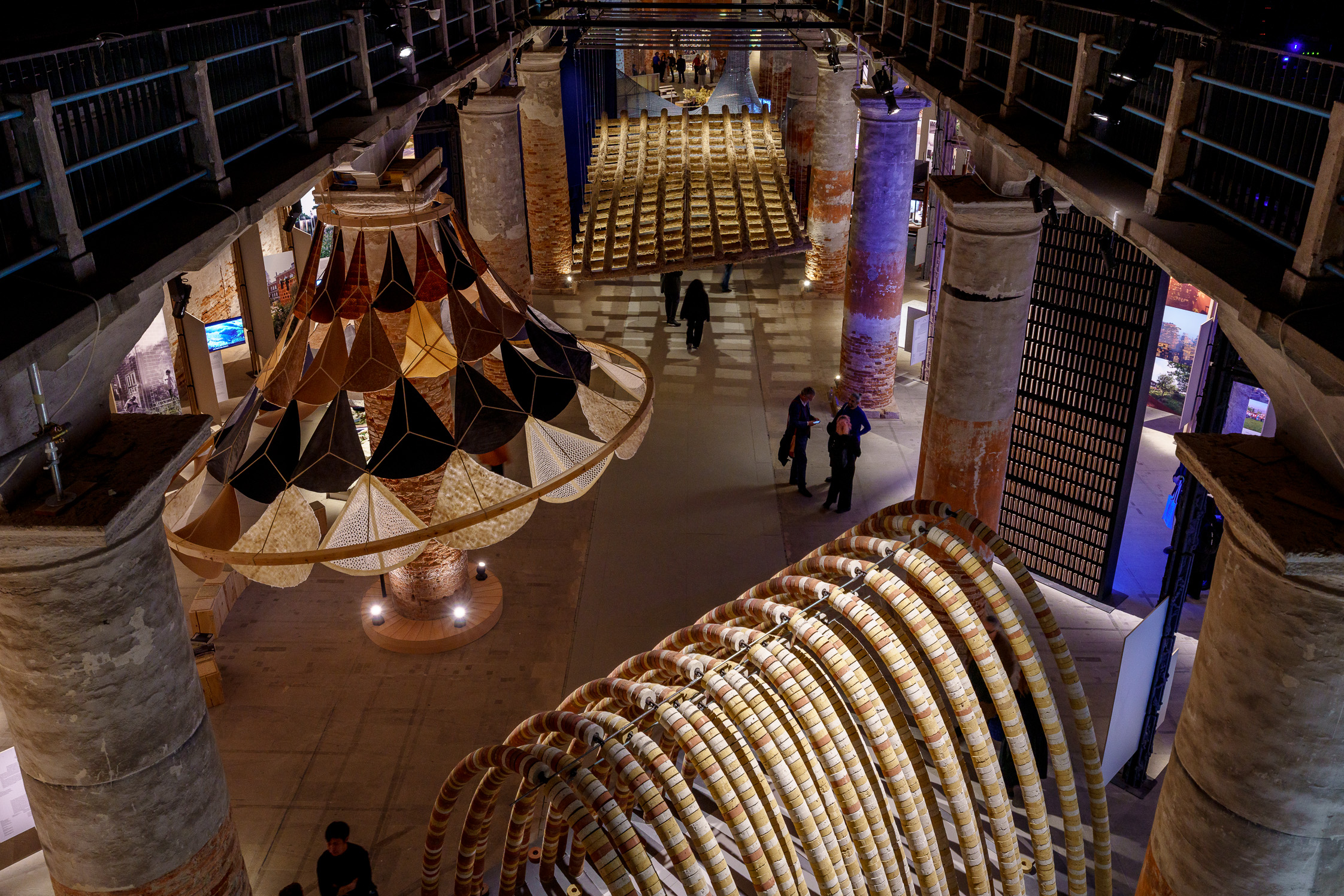
Seeing as the show brings together nature and technology, built space and innovation, Wallpaper* transport & technology editor Jonathan Bell and architecture & environment director Ellie Stathaki were dispatched to attend the preview days in May, ahead of the highly anticipated show’s public opening on the 10th May 2025. Here is what they made out of it all.
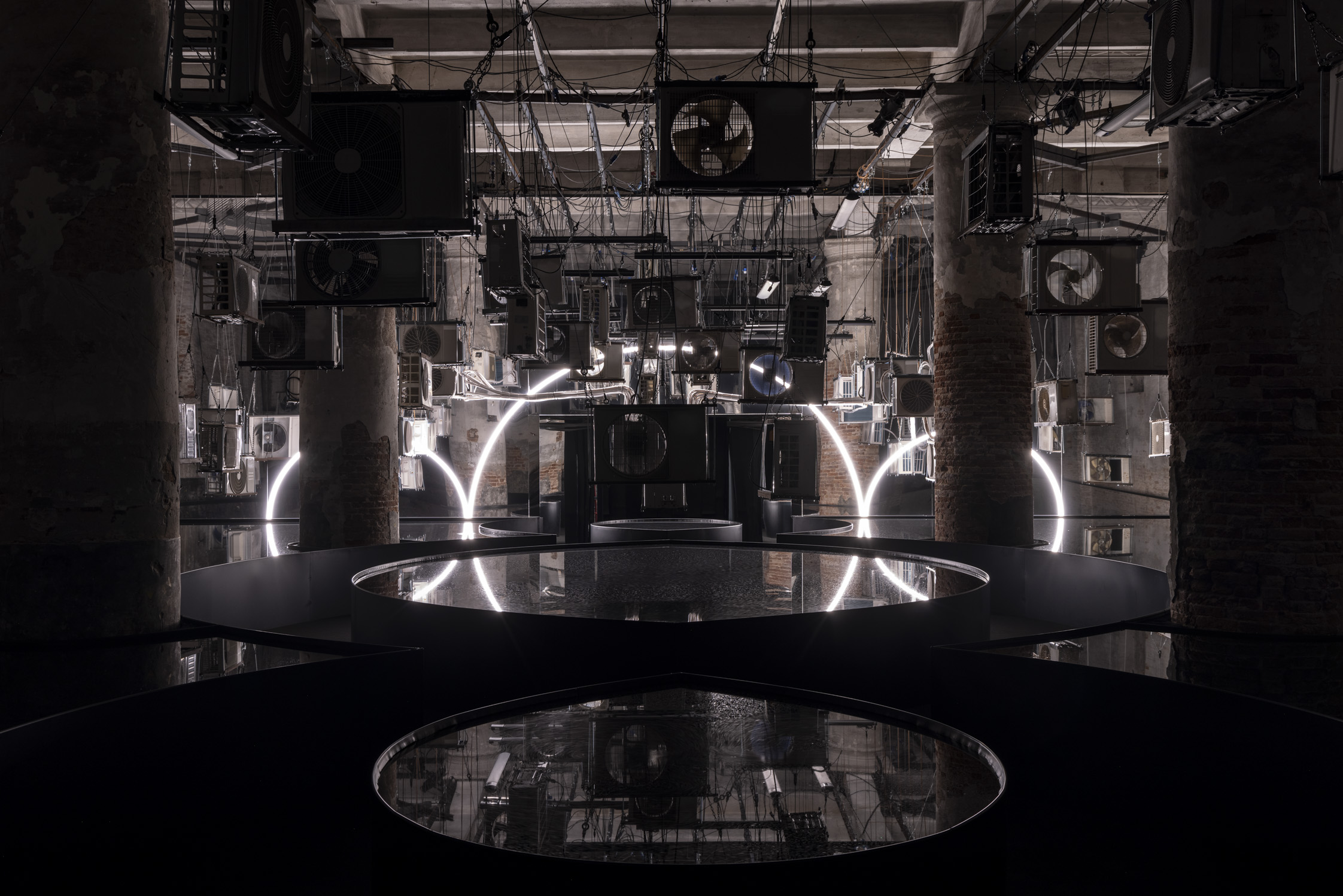
Two Wallpaper* editors discuss the 19th Architecture Biennale in Venice
Ellie Stathaki: I found the entrance to the biennale show very powerful. The first room, especially as the opening day followed a downpour of rain which made temperatures outside cooler, was a bit of a shock. The room, prefaced by Ratti’s thoughts that architecture has always been a response to the climate, was about walking into a thick, hot, dark room. Somewhat stifling and jarring. But I imagine that was the point, and it definitely made me sit up and take notice.
Jonathan Bell: Absolutely. I'd go so far as to say it was the most powerful Arsenale opener ever. Imagine an oppressively hot path through curved reflecting ponds that evoke Richard Wilson’s seminal 20:50, a reflection pool of sump oil installed at the original Saatchi Gallery in 1991. Above this is a hanging garden of whirring, wheezing bolt-on aircon units, of the type found attached to hundreds of thousands of building façades across the hotter hemispheres. Navigate this and you’re confronted with your own reflection: you, the person who just flew into this sinking, crumbling and waterlogged city, right on the frontlines of the fight between architecture and climate.
Receive our daily digest of inspiration, escapism and design stories from around the world direct to your inbox.
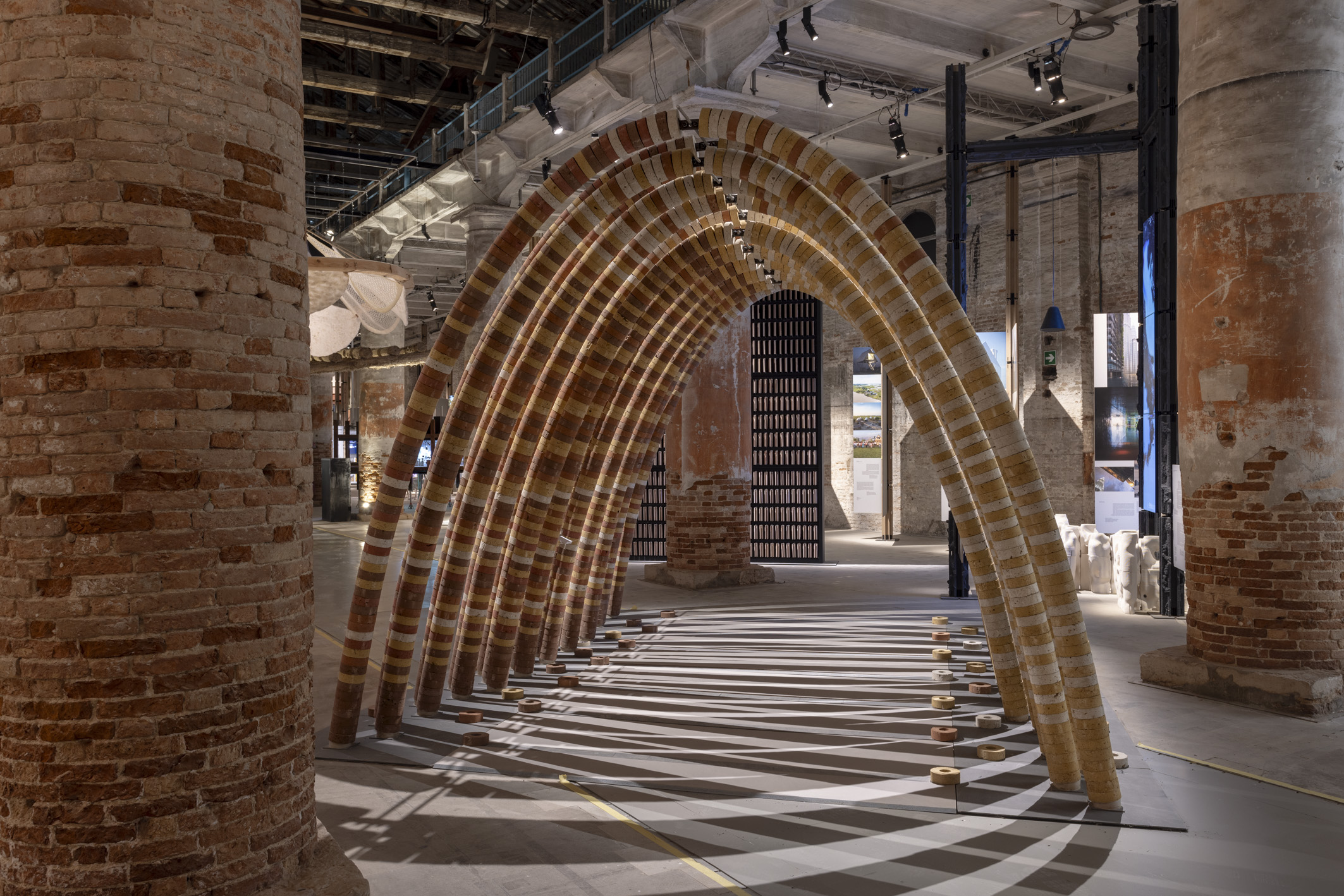
Elephant Chapel
ES: Agreed. This immersion was just what was needed to get you focused, as you walked in, presumably unawares, from Venice’s magical, historical context. It also set the mood for the parts of the exhibition just beyond, where nature's ever-presence is discussed. Several projects were wrapped in nature in some shape or form, and highlighted plants and animals also caught my attention – such as Jeanne Gang’s focus on non-human inhabitants of Venice, eco-diversity in cities and citizen science.
There was also the plant-powered air and water purifying ideas – one of them, ‘Canal Café’ by Diller Scofidio + Renfro, Natural Systems Utilities, SODAI, Aaron Betsky and Davide Oldani, which makes coffee using the city’s canal water, won this year’s Golden Lion for the best participation. Additionally, there was some architecture using bamboo canopies for cooling (a concept by architects Coldefy).
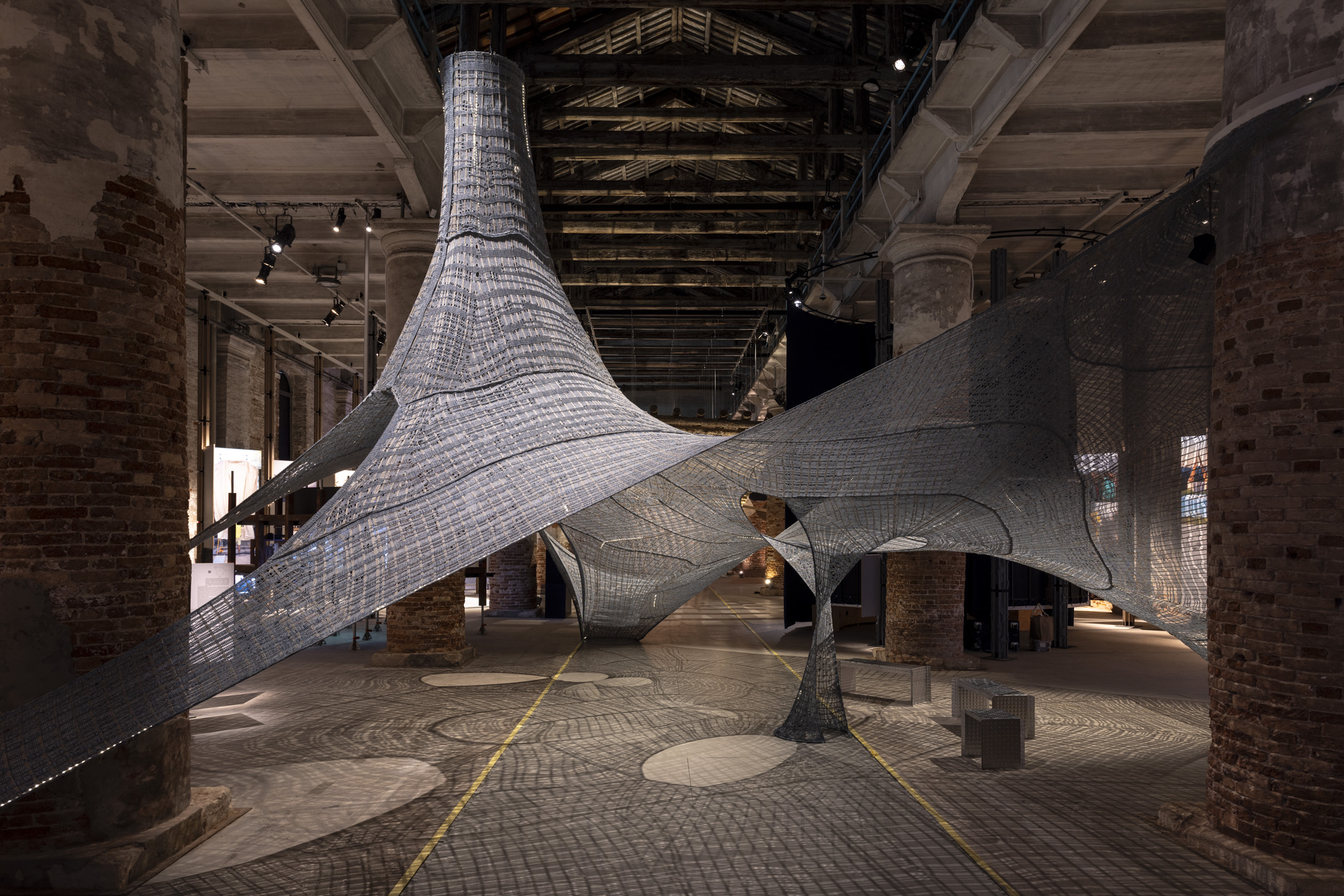
Necto
JB: Yes, it was definitely an approach that cast its net far and wide. Some of the technology felt a little forced – unhappy-looking robots – and I still think that the interface between architecture and nature is still waiting for its killer app moment. It's hard to fault the ambition, though.
ES: There were quite a few clear groupings within the displays overall, if I’d try and categorise things – projects centred on materials (natural, or bio-scientific); mapping and statistics (I am thinking, for instance, MIT’s Senseable City Lab and Journey’s interesting research on Brazil’s favelas – or Limbo Accra’s contribution which continues its work on documenting abandoned buildings); a lot of AI, robotics and technology; and even a few projects venturing beyond the capacity of the Earth’s atmosphere.
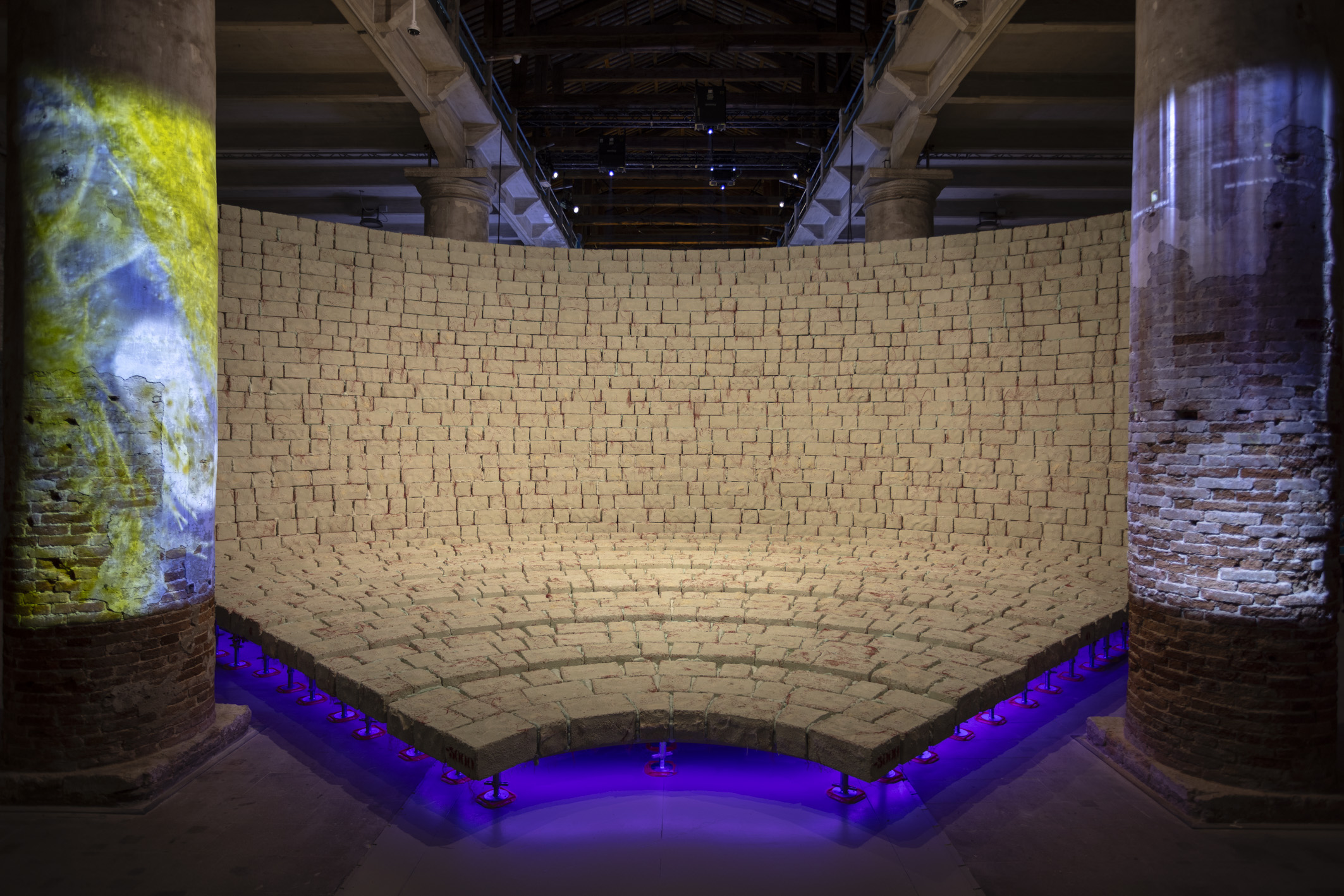
The Other Side of the Hill
JB: There was a lot of that old Biennale standby – create an unusual material, form it into odd-shaped blocks and build a pavilion out of it. There were also beautiful examples of information design, a vision of circularity rendered in a paper cut, or a dense tapestry of the process and scale of banana palm cultivation. But does taking heartbreakingly intensive and destructive processes and rendering them in a beautiful abstract way help or hinder our understanding?
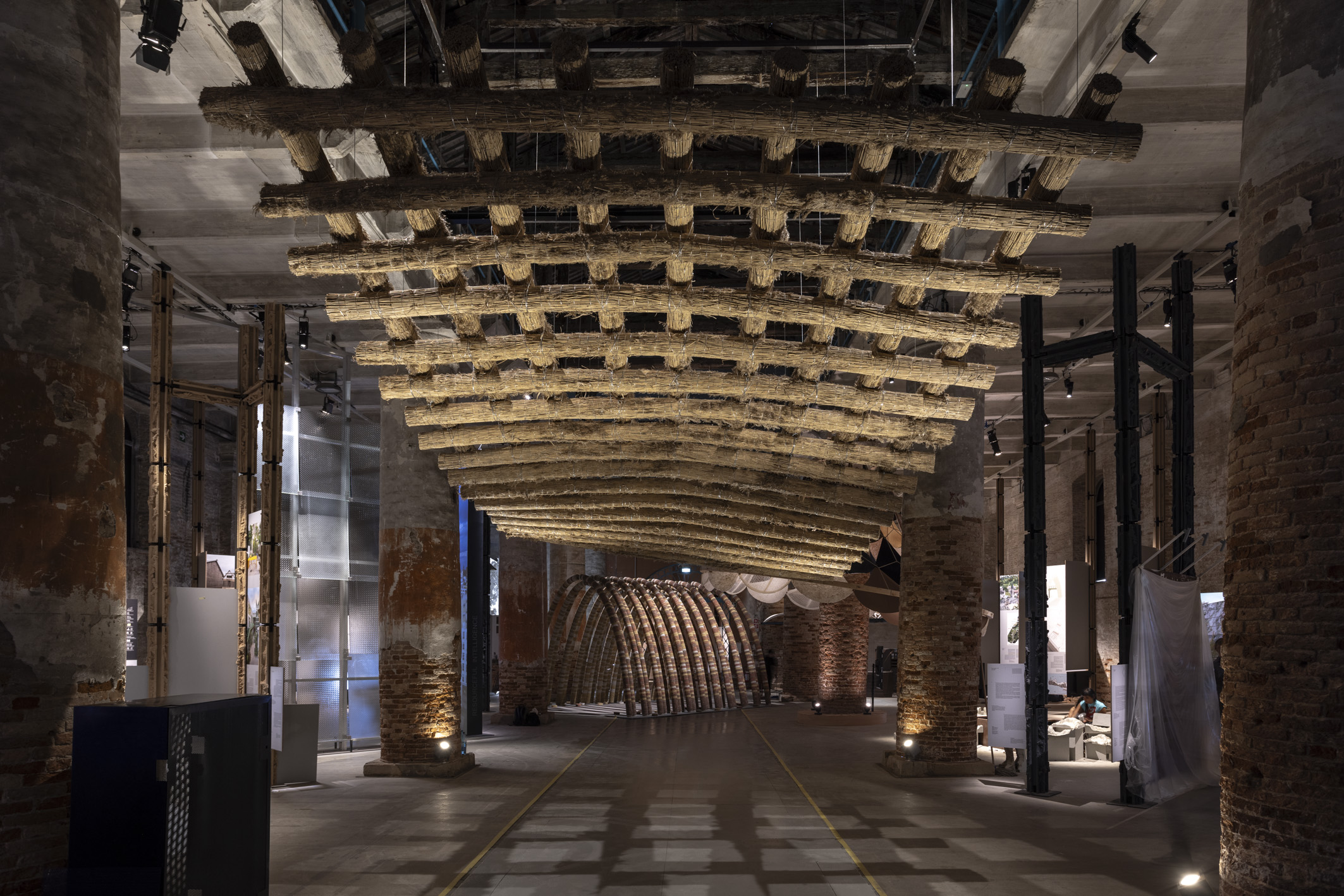
Soft Infrastructure
ES: I think the open call, as well as the invited submission aspect, meant that Carlo had a wealth of great projects and ideas to work with. It must have been really tempting to include as many of them as possible, and celebrate the diversity of the ideas and also the backgrounds of the exhibitors. And the fact that space was more limited this year, with the Central Pavilion out of commission, meant that the rooms were pretty packed, a rich selection, which, however, required a lot of attention to get through. 750 exhibitors and 300 displays are quite a lot more than past biennales offered. I remember feeling Alejandro Aravena’s in 2016 was pretty packed, and that was only 88 contributions.
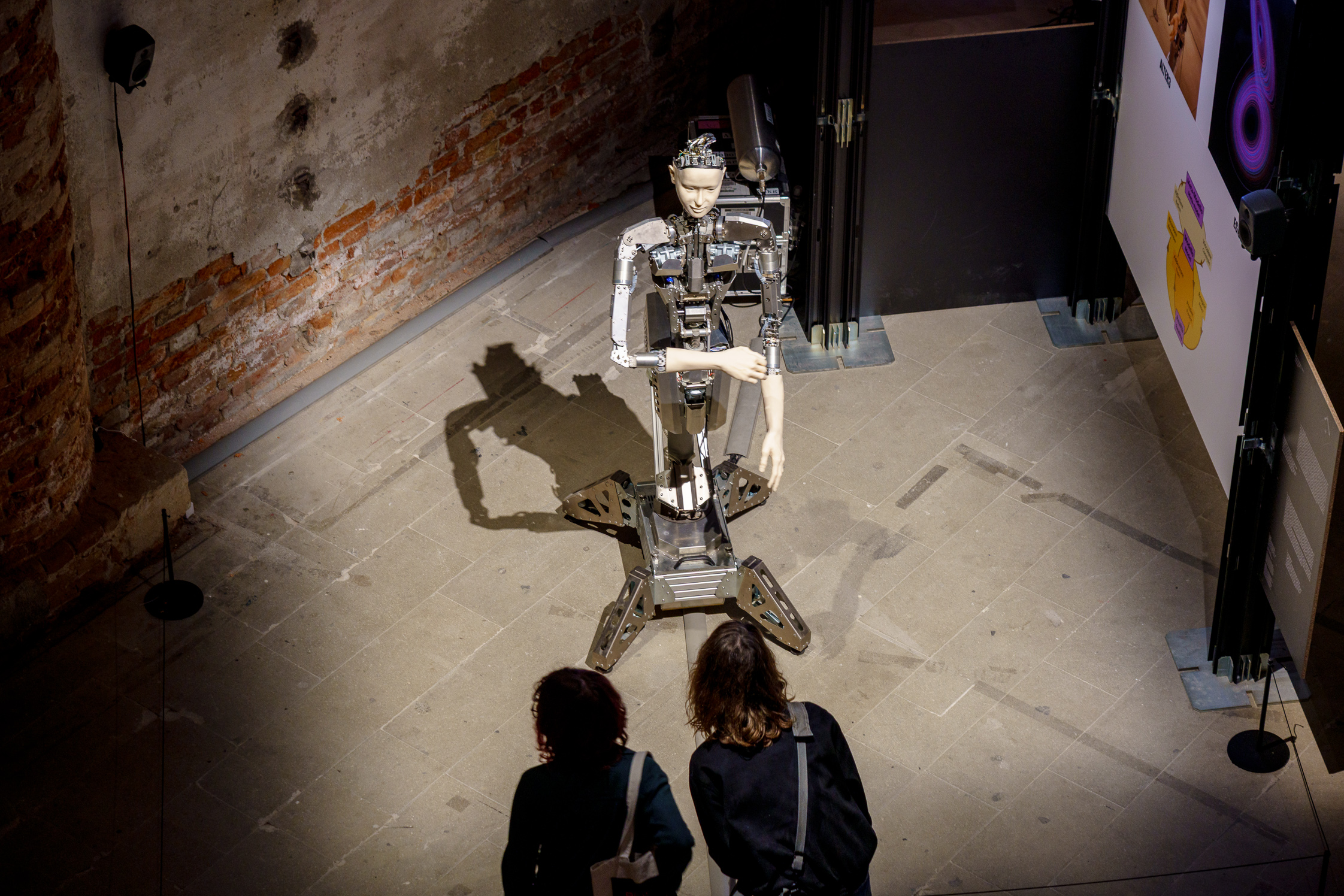
JB: More participants equals greater inclusivity, which is a very valid approach. There's a corresponding sense of urgency around climate, war, injustic, etc., as well as a feeling that architecture itself feels under threat – from AI, from rising costs, from regimes that don't value creative culture. I couldn't help but think that the Biennale showed architects making more work for themselves in the face of some imagined mass extinction event for the profession. Embracing technology for technology's sake. For example, LiDAR scanning Brazilian favelas to explore their structural integrity.
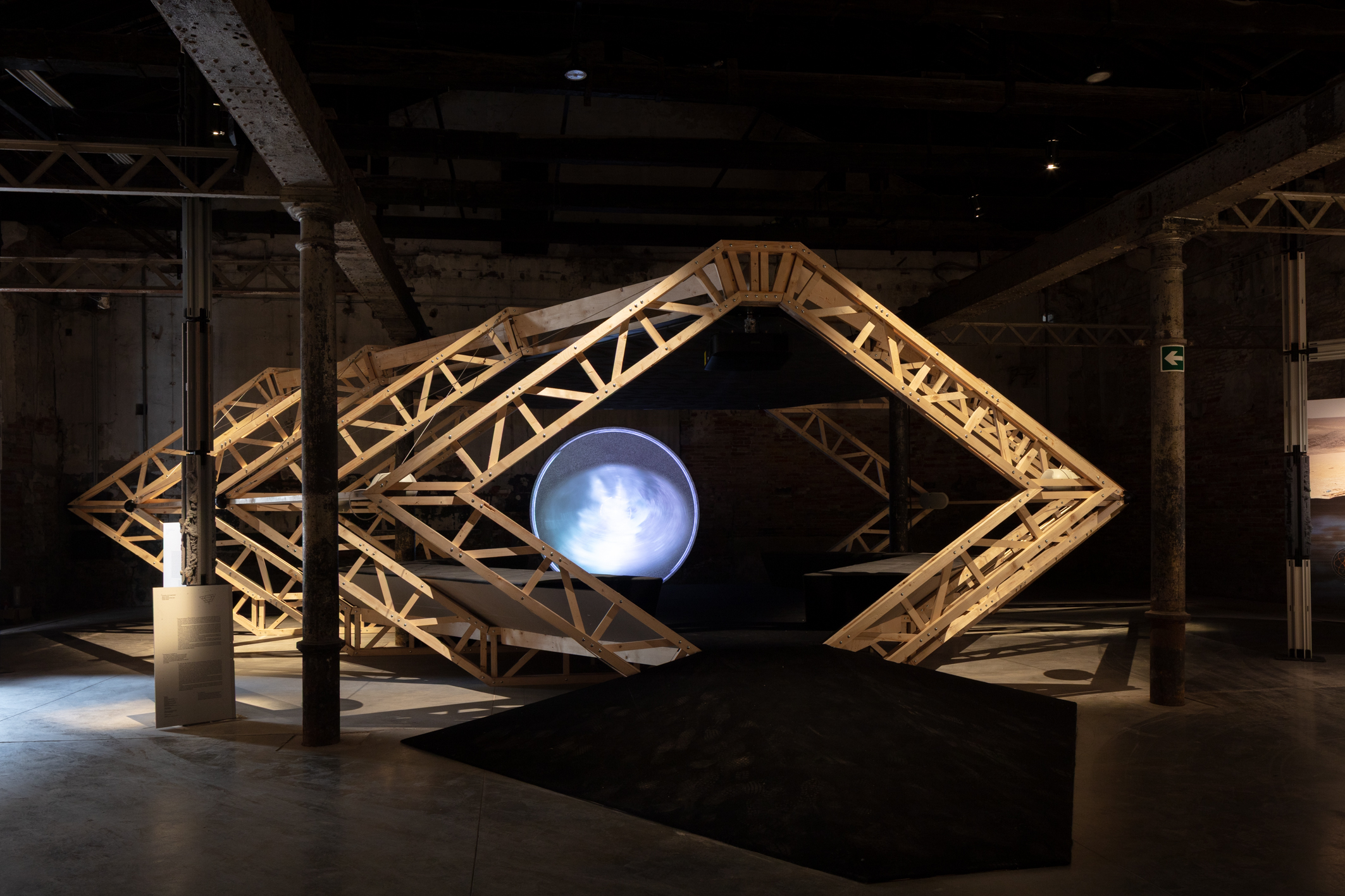
A Satellite Symphony
ES: Back to the displayed projects, at the same time, there were quite a few which spoke to me. The project by Cristina Parreño Alonso, J.Roc Jih (of Studio J.Jih), and Skylar Tibbits, which worked with volcanoes, creating a structure that guides and cools down lava, surprised me. I always enjoy encountering something unexpected, and this definitely was in that world for me. And in the volume of works, I almost missed Tosin Oshinowo's beautifully shot, large-scale, immersive videos 'Alternative Urbanism: The Self-Organized Markets of Lagos' – which also got a special mention by the biennale jury – in my first sweep. I am so glad I didn't, in my second.
JB: Scanning ad-hoc housing was also unexpected and strangely beautiful, but it ticked another classic Biennale box, i.e. making a dramatic rendering of a marginalised space that was hard to connect to real life and real needs.
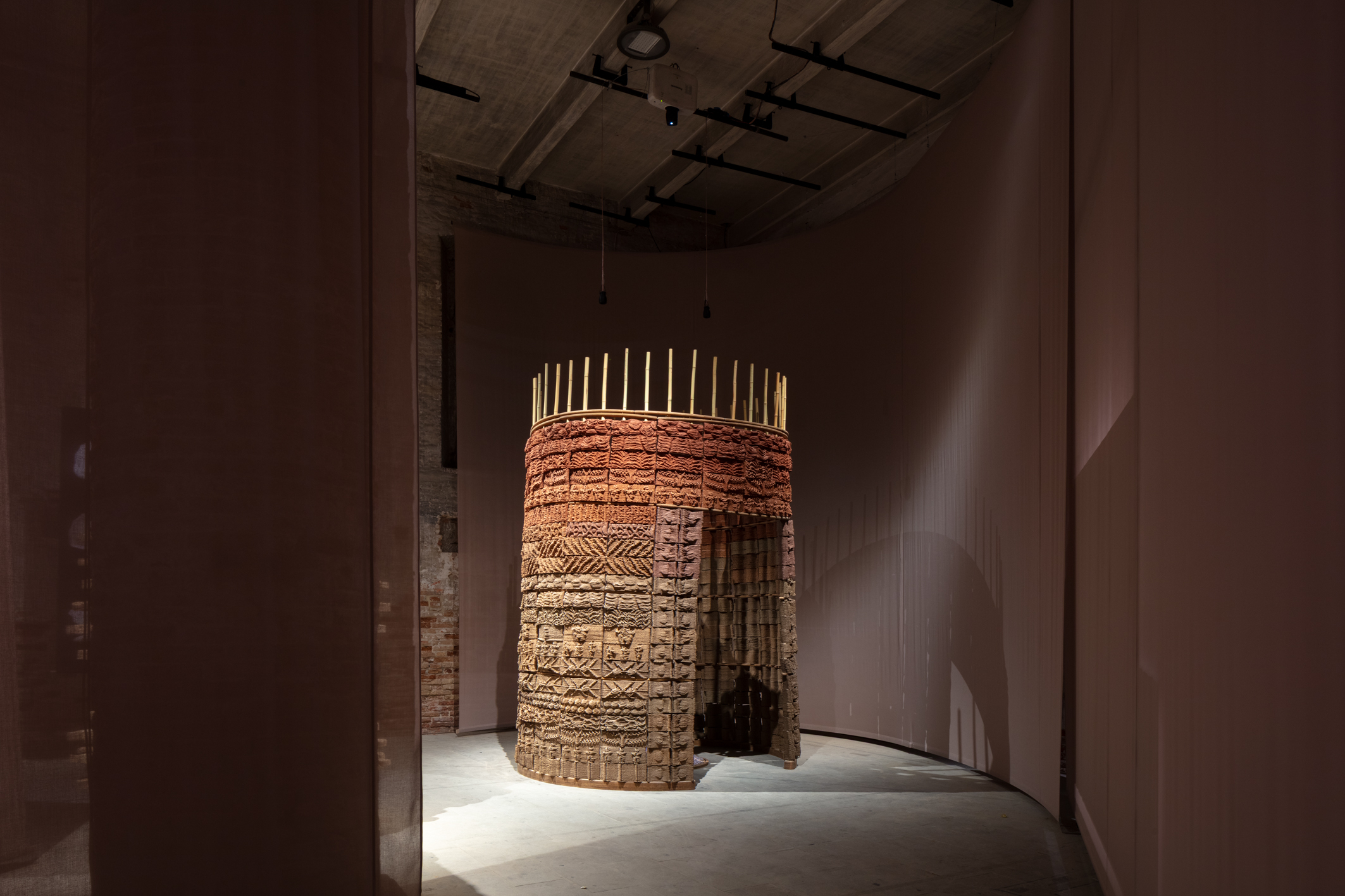
Data Centres and the City- From Problem to Solution on the Path to Sustainable Urbanism
ES: There was also a section of the works that discussed working with traditional skills and/or knowledge and adapting it to our world today. A touch of retrofuturism in some, perhaps too? Would you agree?
JB: I did enjoy watching the bored robot ‘sweep’ up after the traditional Bhutanese wood carvers. That robot looked like it was deliberately skiving off doing any real work. Apparently, these little metal guys are going to learn new skills throughout the duration of the exhibition. I wonder if anyone will check up on that?
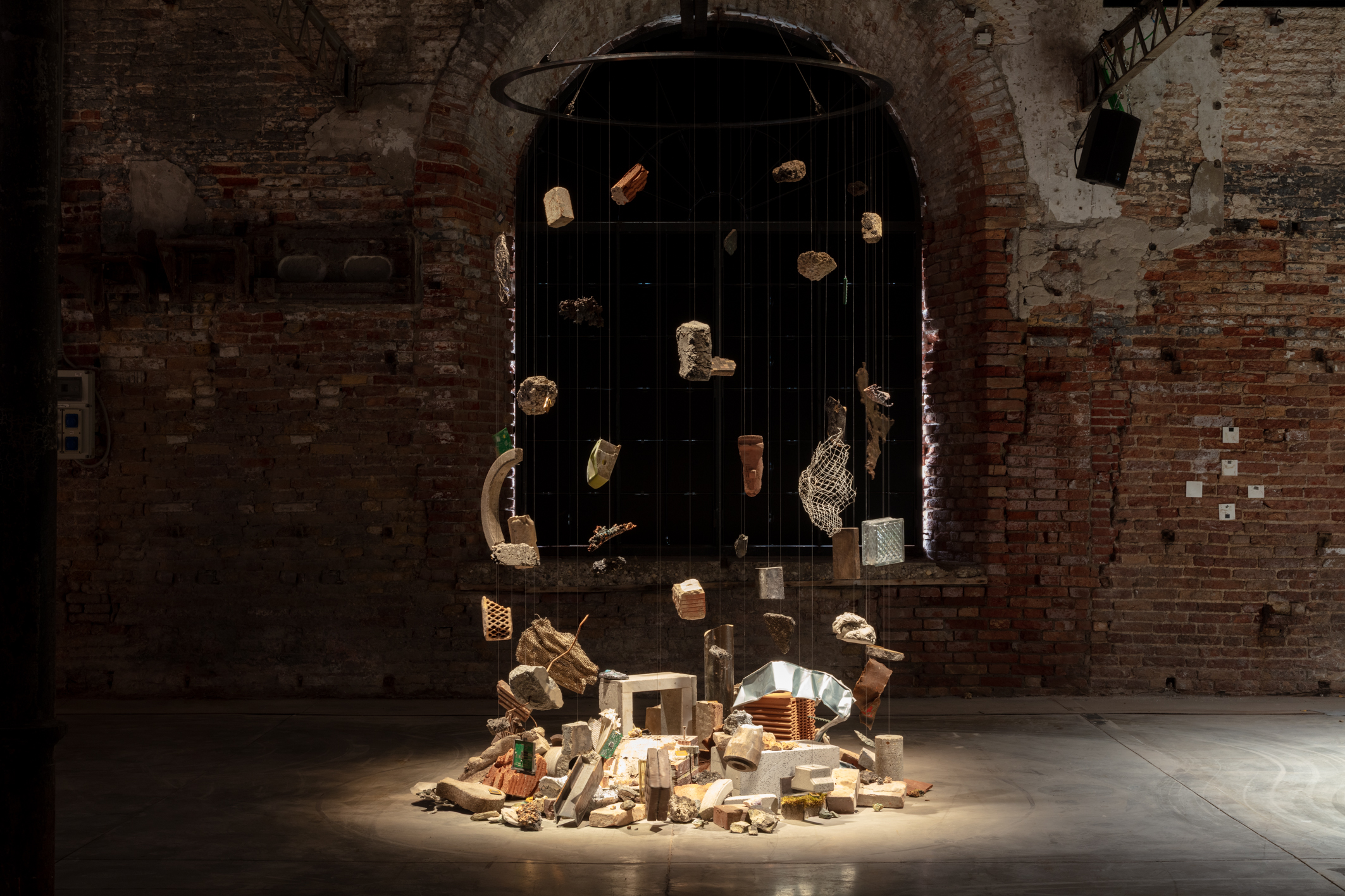
Re-Forming materials
ES: I wonder! Speaking of new technologies that are learning from us. What did you make out of the AI-generated captions? For those who haven't been to the Biennale yet: there was a longer version of the caption texts, offering a fuller picture of each presented project, and then there was an AI-generated summary of it, over a sentence or two, beneath it. My initial thought was that I didn't need the condensed version, and I was worried that nuances and important points would be missed this way, but after a few rooms full of projects, my eye did end up going to the short version. Maybe these versions served as a comment about AI-condensing and processing, of which you read more and more these days.
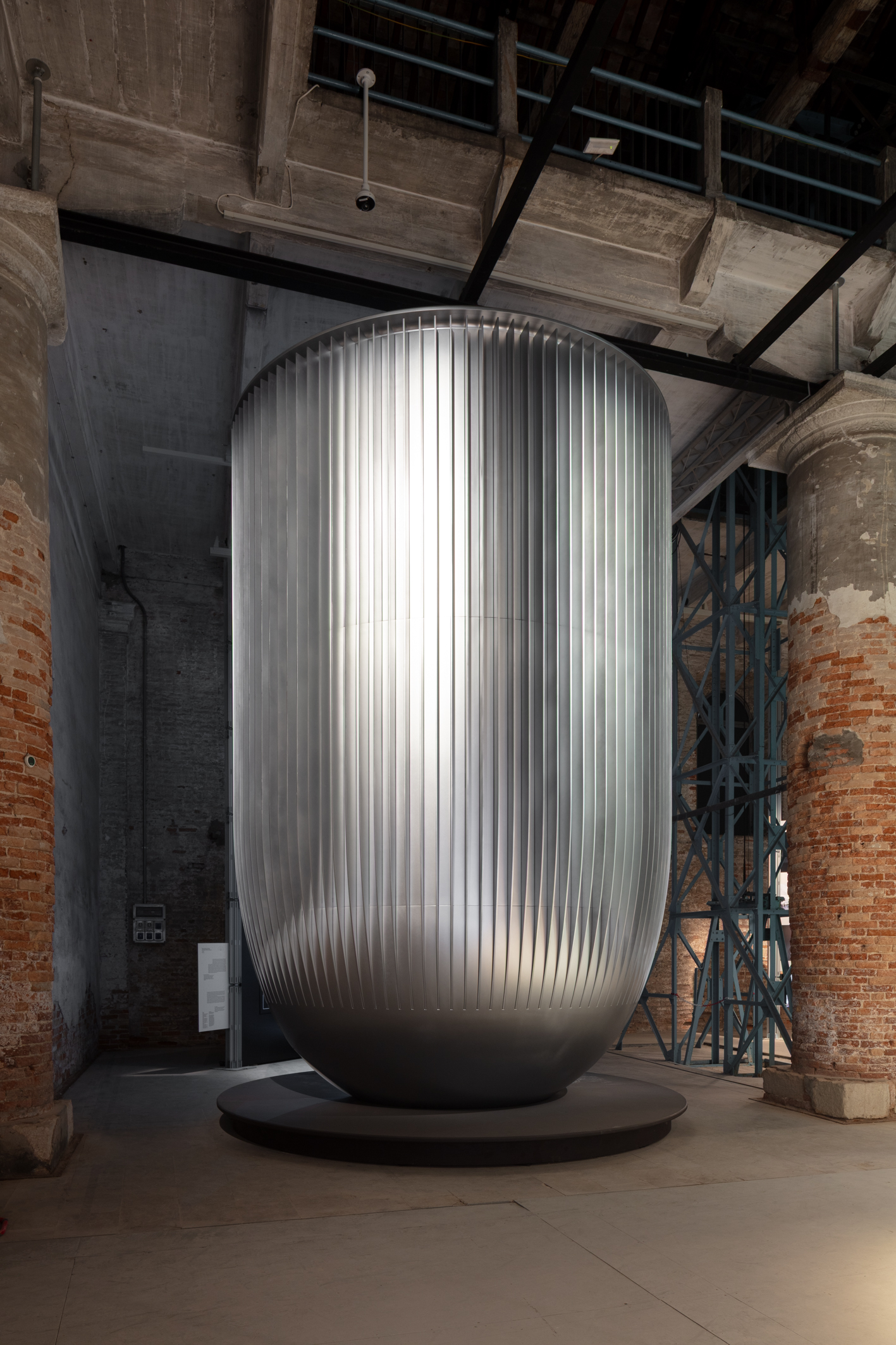
Revolutionizing clean energy- Integrating advanced nuclear solutions and the built environment
JB: I felt the AI texts mocked our already faltering attention spans and ever-increasing reliance on the machine. Could we cross-check? Fact check? Sense check? It added to the crisis of confidence in the validity of creativity. How can we make sense of data when data has already made up its mind about us?
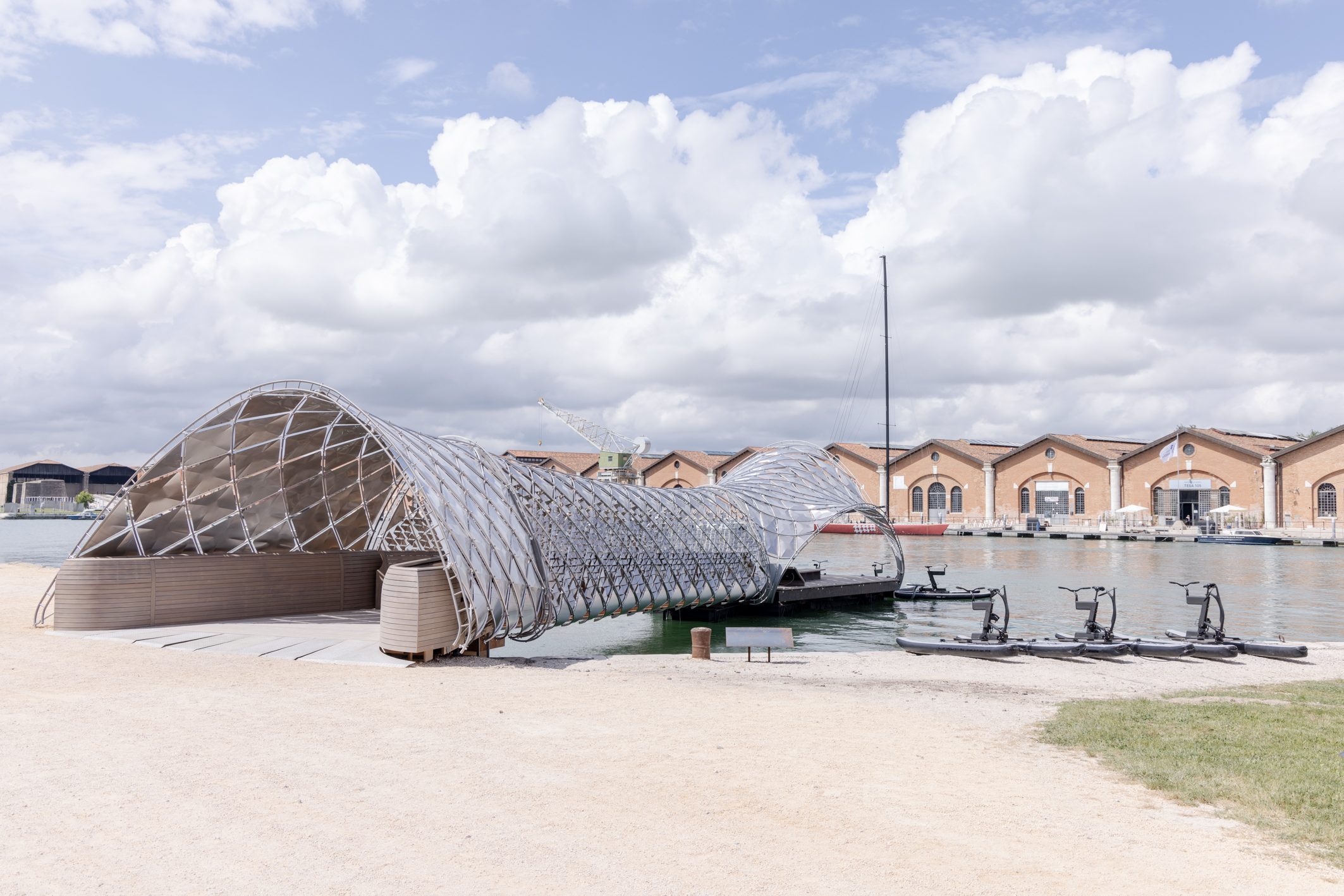
Gateway To Venice’s Waterways
ES: It is exactly the sort of thing that raises worries in the industry and beyond - about how to use AI in architecture, and writing, for that matter, in a fruitful and safe way. So it's a good thing to bring it to the forefront and inspire more discussion around it.
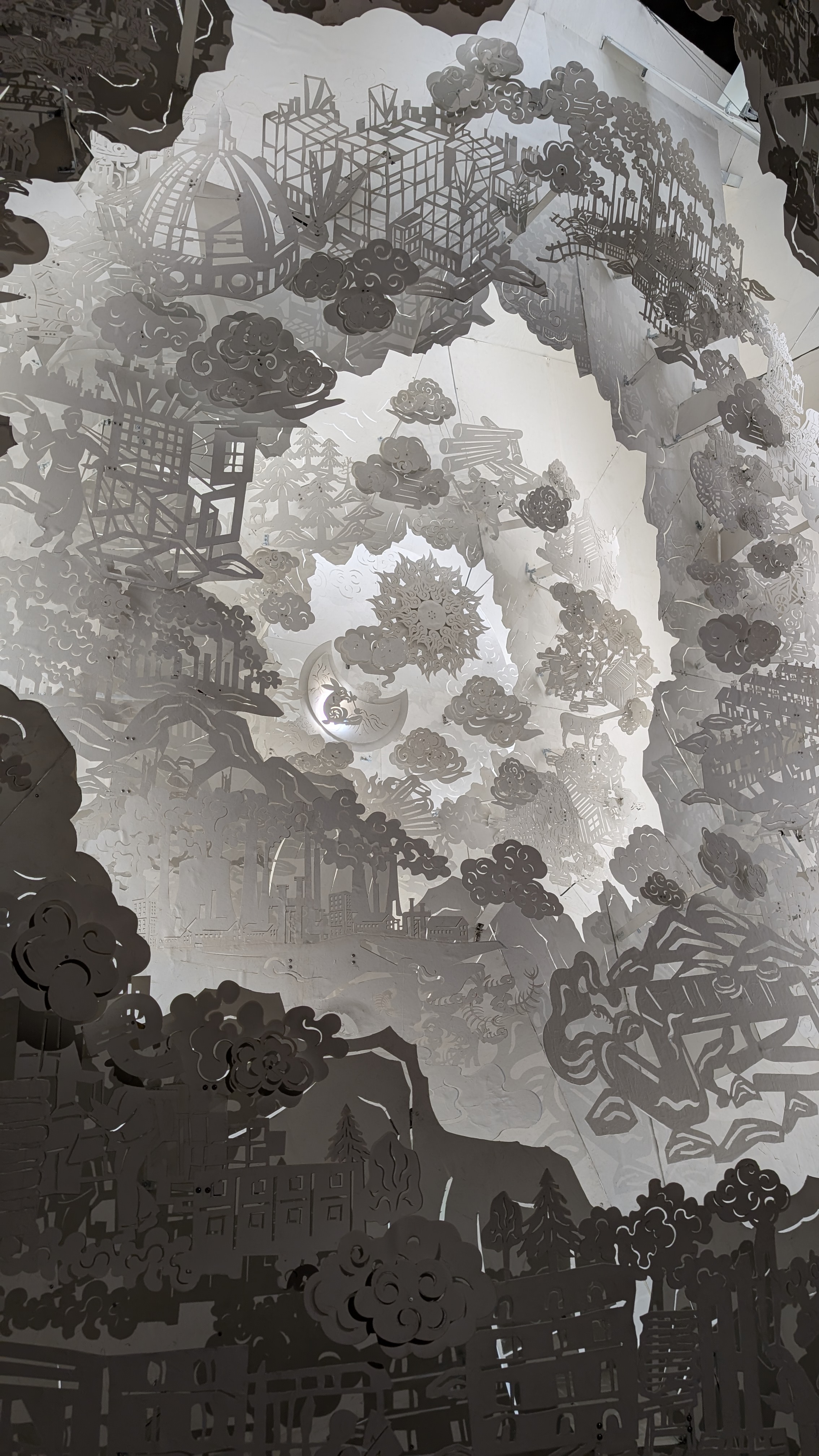
JB: I also felt there were conflicting themes running through the Arsenale, the intersection of technological determinism – which architects have always loved – versus the embrace of a new analogue sensibility. Yet the end result wasn’t an elegant hybrid but the cyberpunk-y world of ad-hoc accretions and adaptations. You couldn’t criticise the sentiment – that we need to adapt and evolve failing systems of production and longstanding structural inequalities. I think the presentation could have been a bit less scattergun though – I liked the point Olly Wainwright made in his review in the Guardian that a two-day visit to the Arsenale would give you about 72 seconds to spend on each contributor.
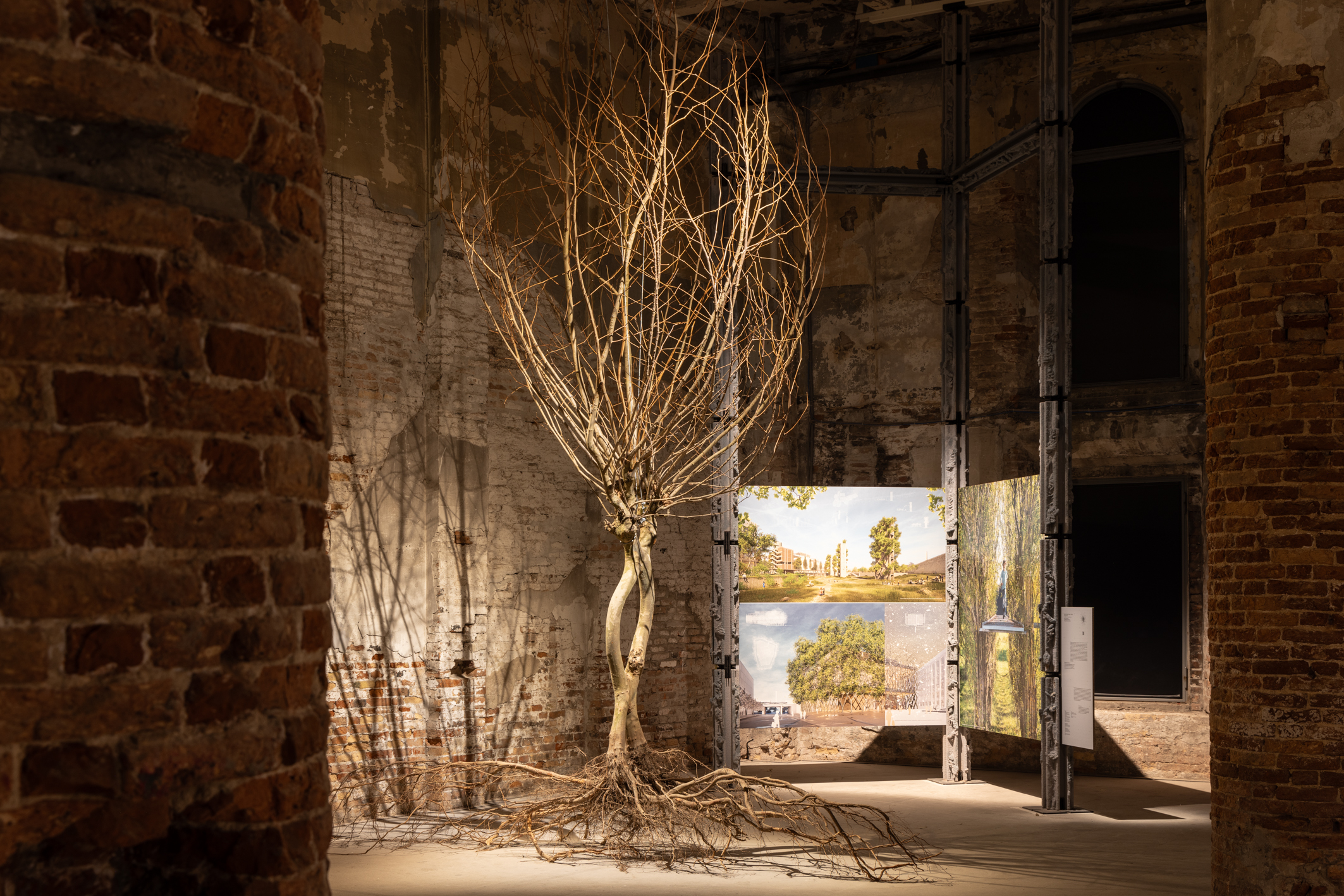
Architecture as Trees, Trees as Architecture
ES: Many of the entries this year were about research or theoretical ideas. They could of course become reality, and there were some great analyses and reflections on existing work, structures already built and cities and our experience of them. But also, likely drawing on Carlo's own links to academia [Ratti teaches at the Massachusetts Institute of Technology, where he directs the Senseable City Lab], a bit part of the biennale discussed the future - innovation and what's to come. Whether these are projects that will be realised or are there to hint at a potential future reality, we will have to see.

Deserta Ecofolie
The 2025 Venice Architecture Biennale will run 10 May till 23 November 2025
Ellie Stathaki is the Architecture & Environment Director at Wallpaper*. She trained as an architect at the Aristotle University of Thessaloniki in Greece and studied architectural history at the Bartlett in London. Now an established journalist, she has been a member of the Wallpaper* team since 2006, visiting buildings across the globe and interviewing leading architects such as Tadao Ando and Rem Koolhaas. Ellie has also taken part in judging panels, moderated events, curated shows and contributed in books, such as The Contemporary House (Thames & Hudson, 2018), Glenn Sestig Architecture Diary (2020) and House London (2022).
-
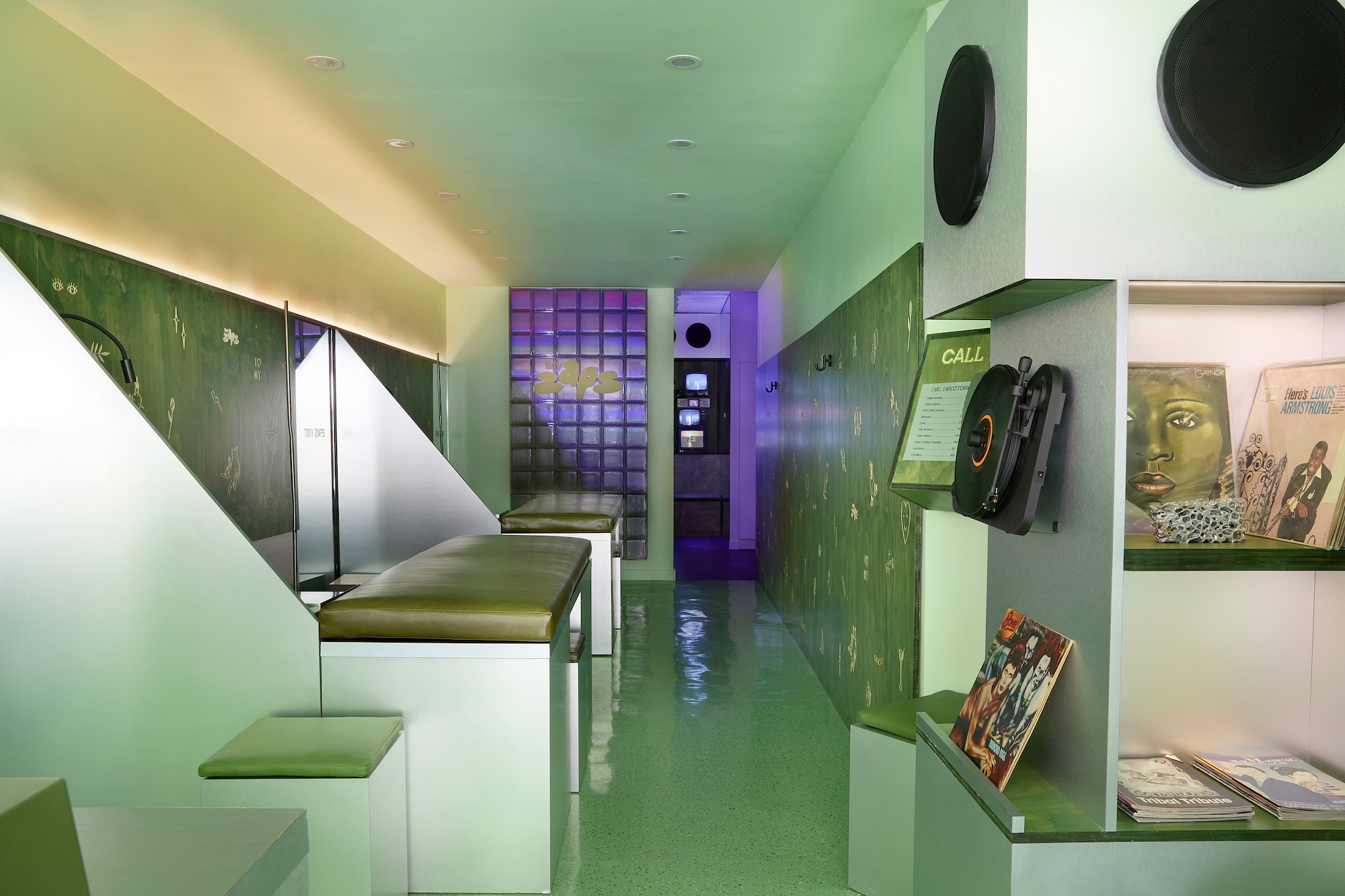 Terrified to get inked? This inviting Brooklyn tattoo parlour is for people who are 'a little bit nervous'
Terrified to get inked? This inviting Brooklyn tattoo parlour is for people who are 'a little bit nervous'With minty-green walls and an option to 'call mom', Tiny Zaps' Williamsburg location was designed to tame jitters
-
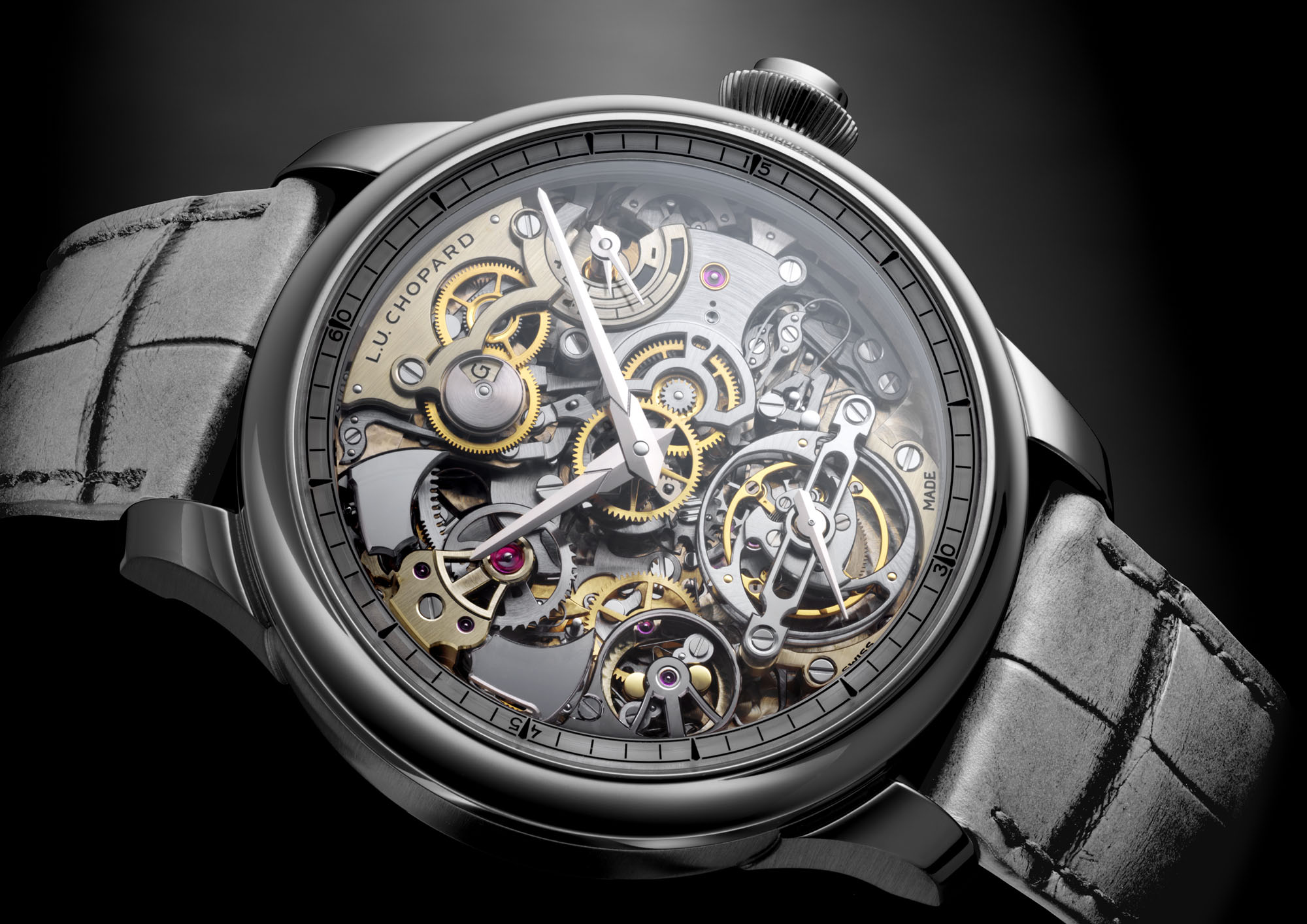 Let’s hear it for the Chopard L.U.C Grand Strike chiming watch
Let’s hear it for the Chopard L.U.C Grand Strike chiming watchThe Swiss watchmaker’s most complicated timepiece to date features an innovative approach to producing a crystal-clear sound
-
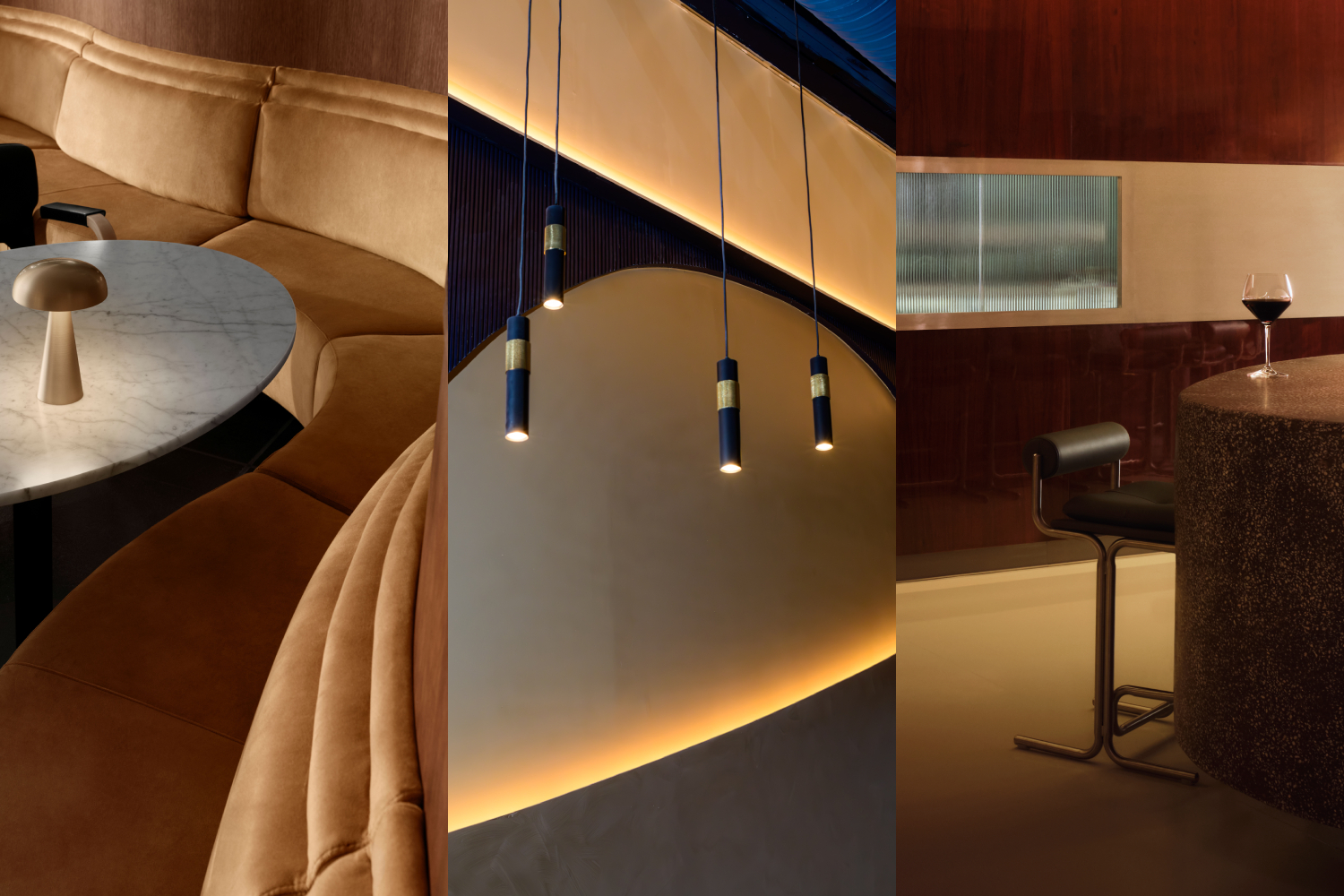 Form... and flavour? The best design-led restaurant debuts of 2025
Form... and flavour? The best design-led restaurant debuts of 2025A Wallpaper* edit of the restaurant interiors that shaped how we ate, gathered and lingered this year
-
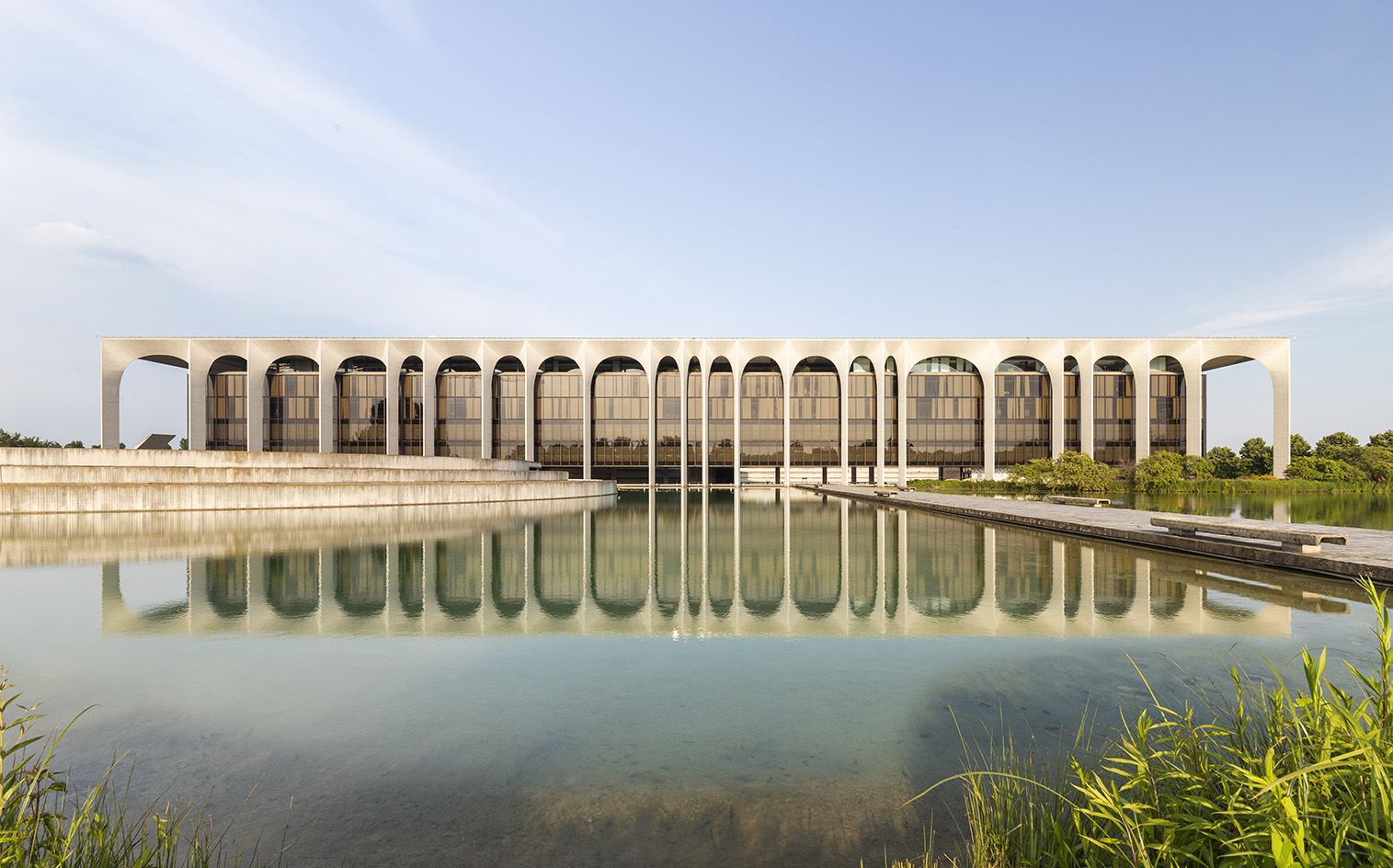 Modernist Palazzo Mondadori’s workspace gets a playful Carlo Ratti refresh
Modernist Palazzo Mondadori’s workspace gets a playful Carlo Ratti refreshArchitect Carlo Ratti reimagines the offices in Palazzo Mondadori, the seminal work by Brazilian master Oscar Niemeyer in Milan
-
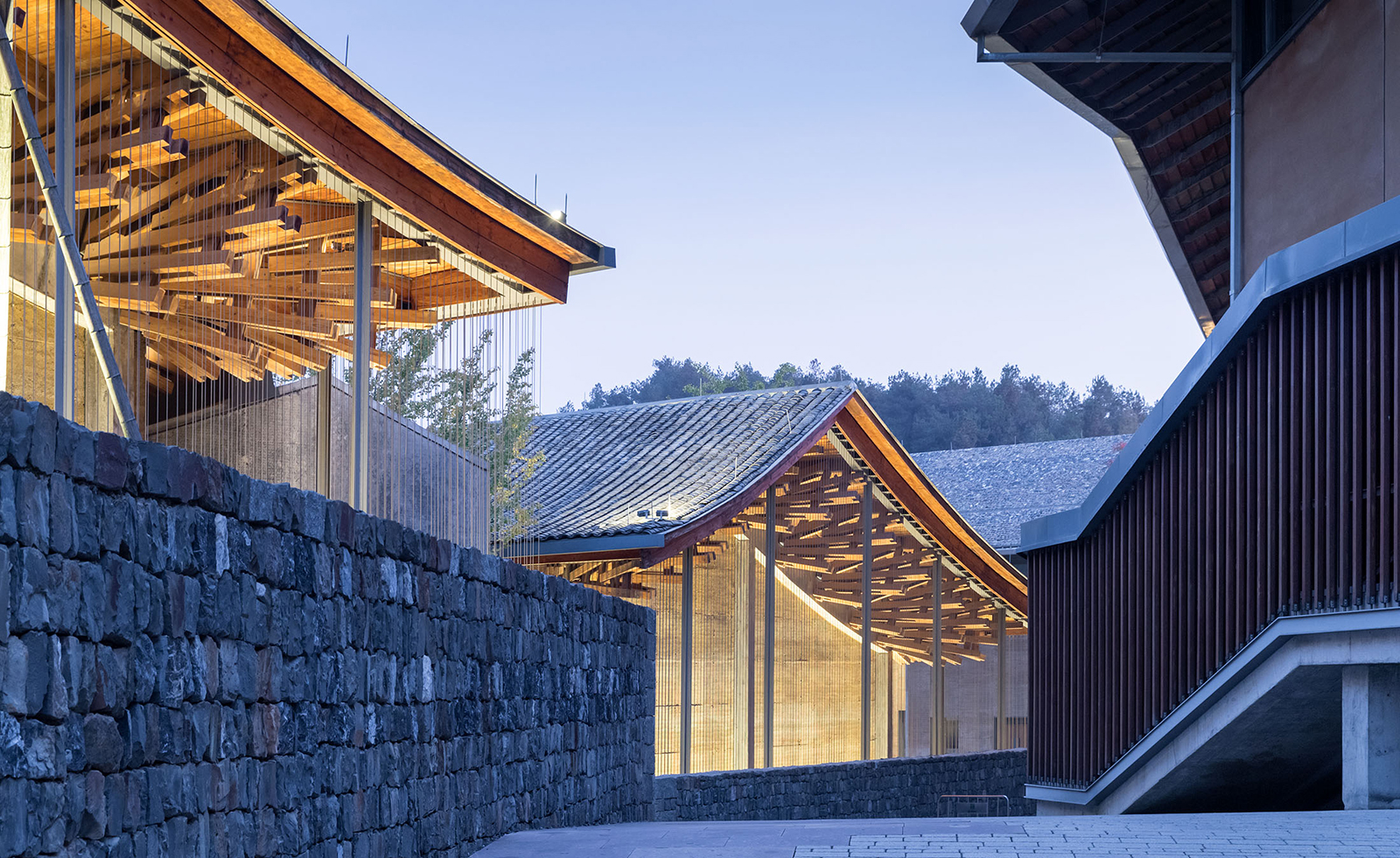 Wang Shu and Lu Wenyu to curate the 2027 Venice Architecture Biennale
Wang Shu and Lu Wenyu to curate the 2027 Venice Architecture BiennaleChinese architects Wang Shu and Lu Wenyu have been revealed as the curators of the 2027 Venice Architecture Biennale
-
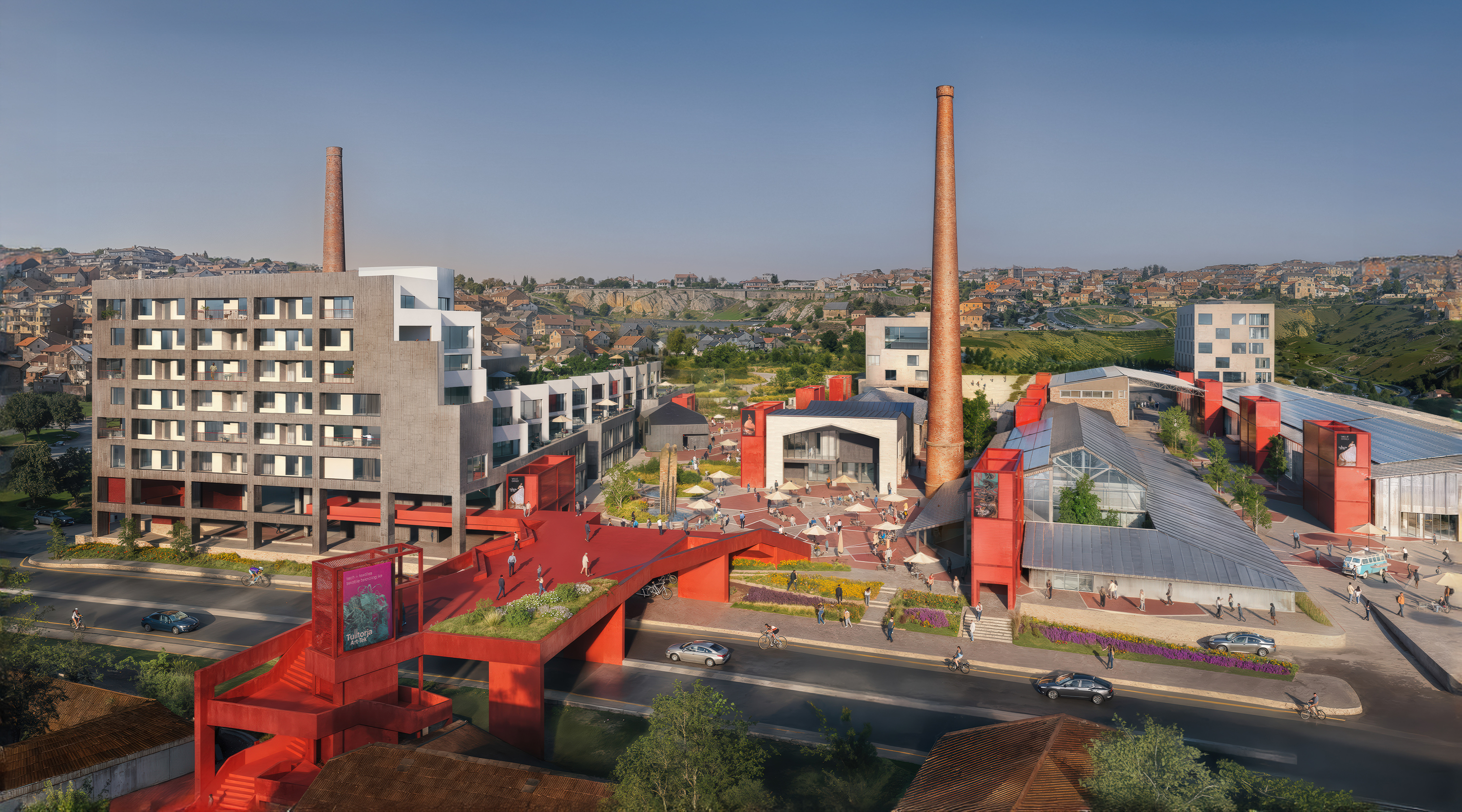 At the Holcim Foundation Forum and its Grand Prizes, sustainability is both urgent and hopeful
At the Holcim Foundation Forum and its Grand Prizes, sustainability is both urgent and hopefulThe Holcim Foundation Forum just took place in Venice, culminating in the announcement of the organisation's Grand Prizes, the projects especially honoured among 20 previously announced winning designs
-
 Carlo Ratti reflects on his bold Venice Architecture Biennale as it closes this weekend
Carlo Ratti reflects on his bold Venice Architecture Biennale as it closes this weekendThe Venice Architecture Biennale opens with excitement and fanfare every two years; as the 2025 edition draws to a close, we take stock with its curator Carlo Ratti and ask him, what next?
-
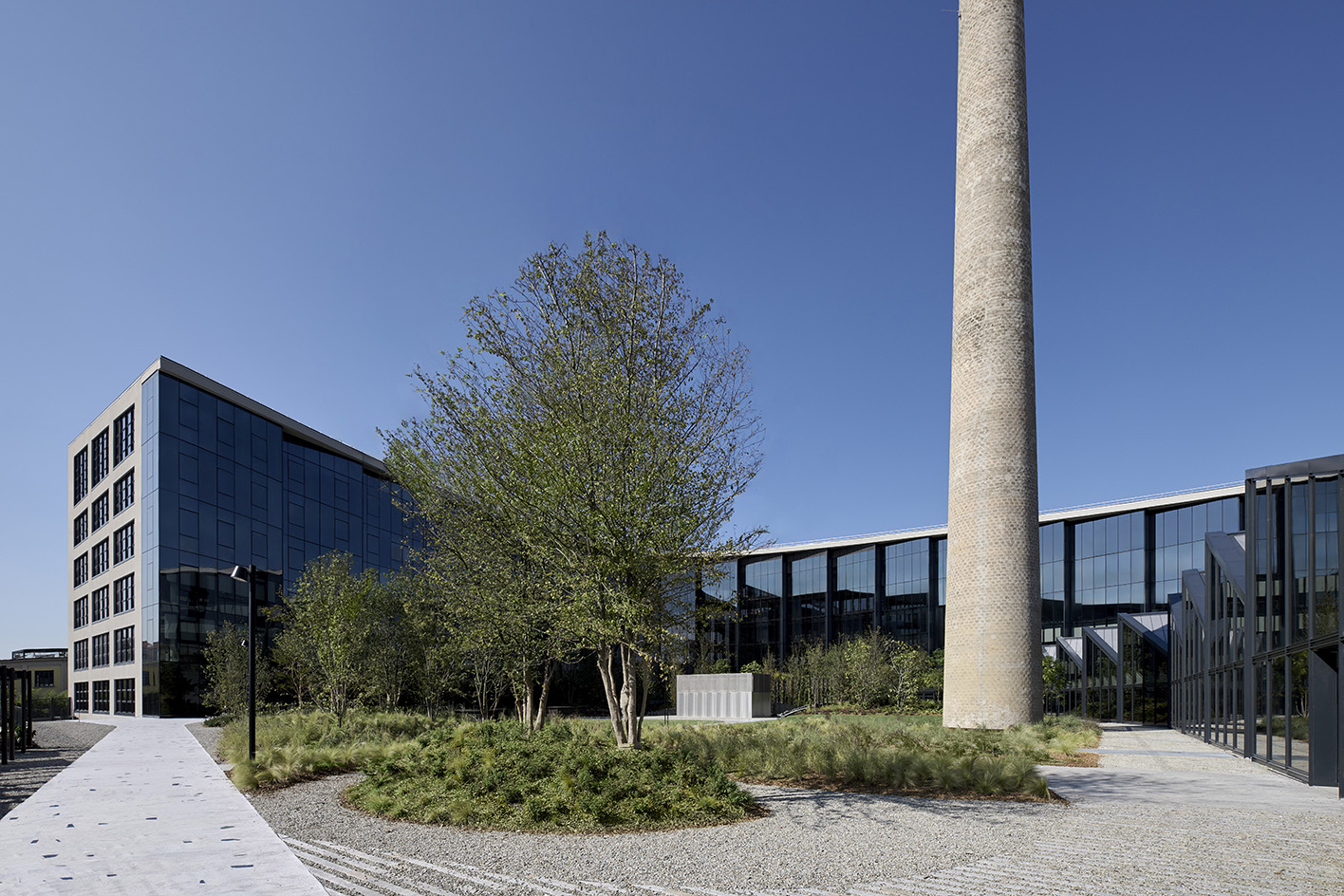 Step inside Casa Moncler, the brand’s sustainable and highly creative Milanese HQ
Step inside Casa Moncler, the brand’s sustainable and highly creative Milanese HQCasa Moncler opens its doors in a masterfully reimagined Milanese industrial site, blending modern minimalism and heritage, courtesy of ACPV Architects Antonio Citterio Patricia Viel
-
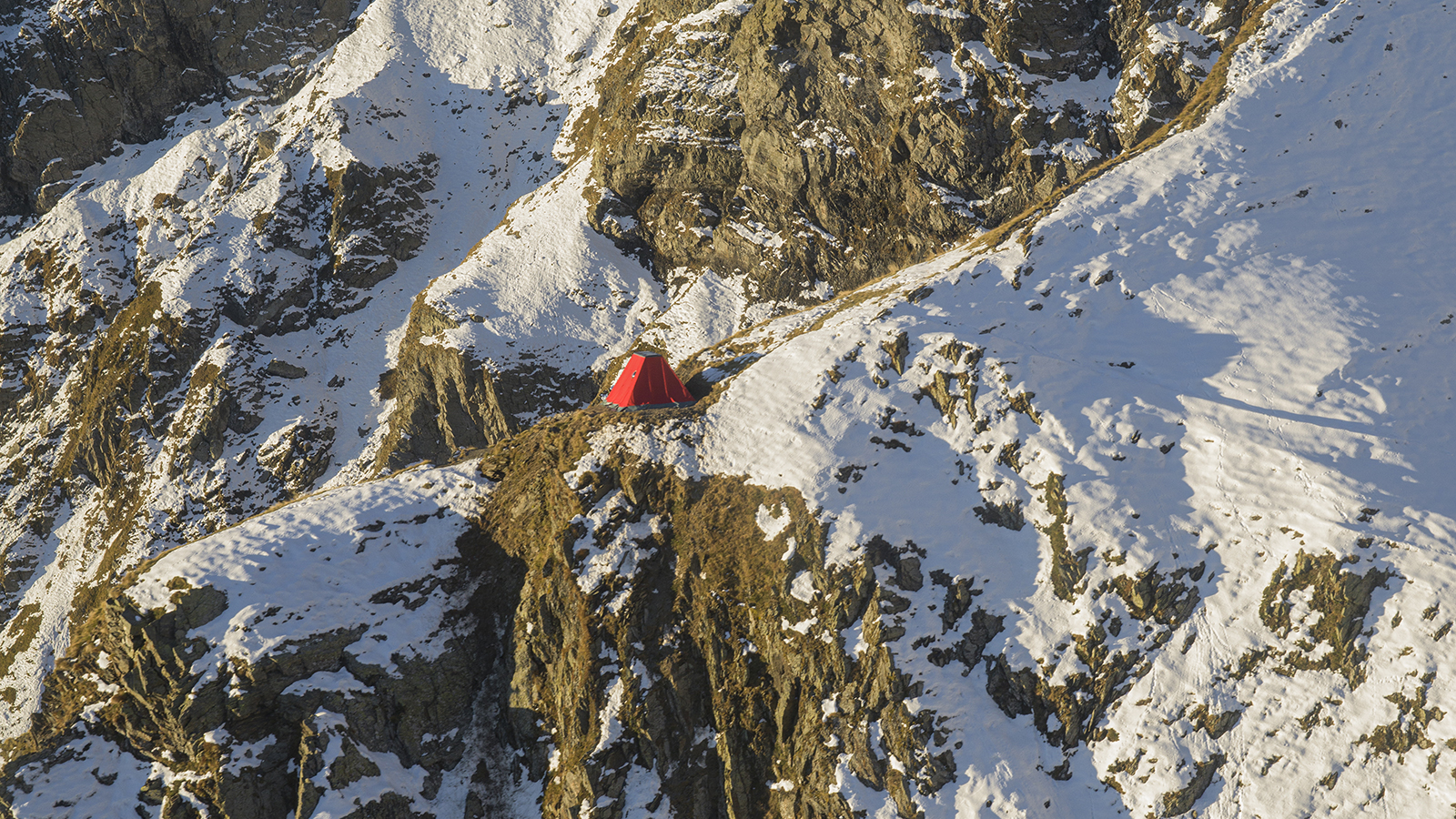 Aldo Frattini Bivouac is a mountain shelter, but not as you know it
Aldo Frattini Bivouac is a mountain shelter, but not as you know itA new mountain shelter on the northern Italian pre-Alp region of Val Seriana, Aldo Frattini Bivouac is an experimental and aesthetically rich, compact piece of architecture
-
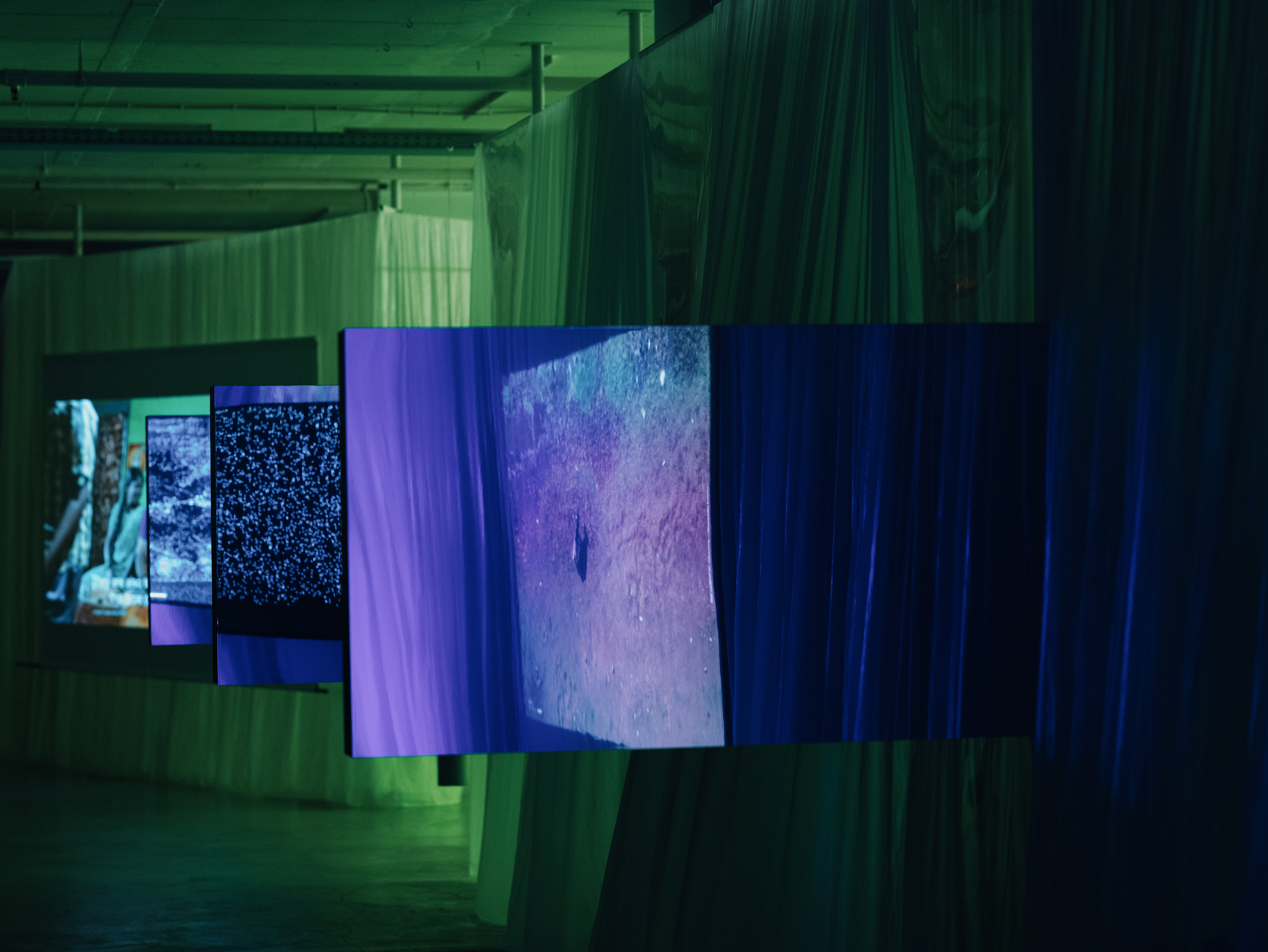 2025 Lisbon Architecture Triennale ponders the (literal and figurative) weight of humanity
2025 Lisbon Architecture Triennale ponders the (literal and figurative) weight of humanityJoin us on a tour of the 2025 Lisbon Architecture Triennale, exploring the question ‘How Heavy is the City?’ and our impact on the planet
-
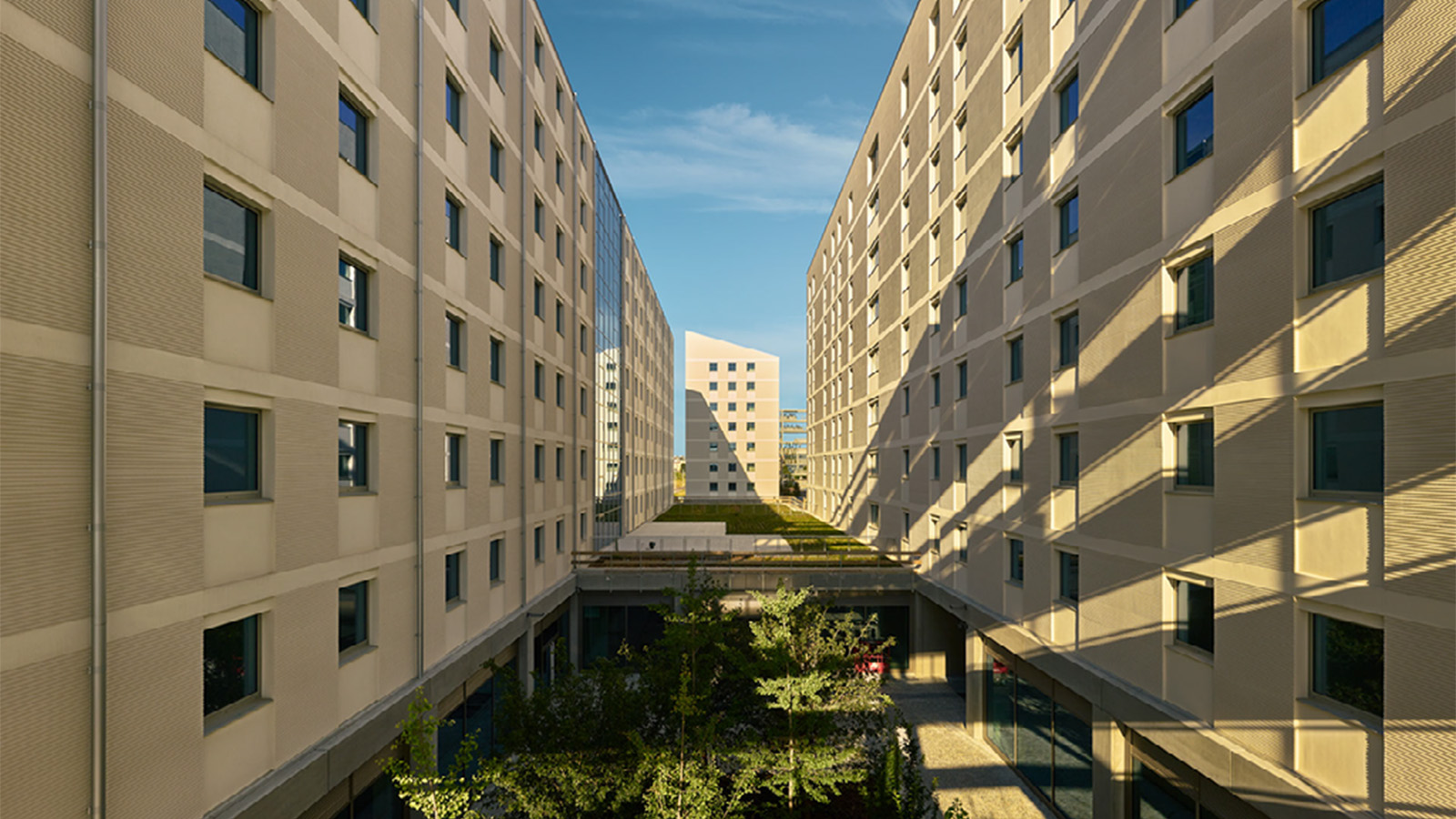 The 2026 Winter Olympics Village is complete. Take a look inside
The 2026 Winter Olympics Village is complete. Take a look insideAhead of the 2026 Winter Olympics, taking place in Milan in February, the new Olympic Village Plaza is set to be a bustling community hub, designed by Skidmore, Owings & Merrill